Because they are hardy and simple to care for, snake plants, also called Good Luck Plant, Sansevieria, and Mother in Law’s Tongue, are a fairly common type of indoor plant. But have you ever wondered, are snake plants toxic to cats?
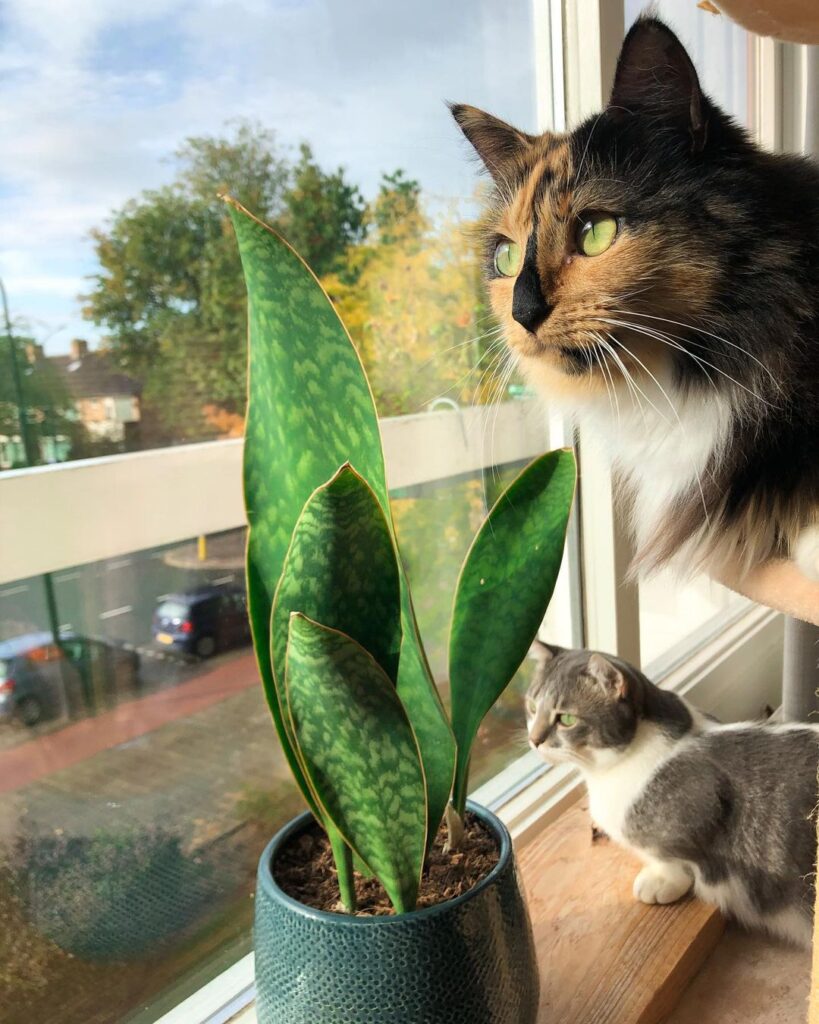
Unfortunately, Snake Plants can be toxic plants to your pet cats. This is due to the compound, Saponin, found in snake plants. The plant uses Saponin as a defense mechanism to shield itself from dangerous insects, fungi, and bacteria.
Fortunately, not everything is lost if you already own a snake plant. You may attempt a few methods to stop your cats from consuming it. In addition, you may buy many more lovely cat-friendly houseplants to beautify your home as well.
We’ve covered all the essential information regarding snake plant toxicity. Additionally, we will be giving you tips on how to handle snake plants indoors so you have some choices to spark your interior design imagination.
Are Snake Plants Poisonous To Cats?
The evergreen plants known as Snake Plants (Sansevieria Trifasciata) are frequently kept indoors for their capacity to filter the air.
However, they are among the best houseplants to keep inside or outdoors due to their stunning long leaves and ease of upkeep. Although, the toxicity of Snake Plants to humans is often mild or nonexistent, that doesn’t mean they won’t have an impact on our adorable animal pals, either.
As claimed by the American Society for the Prevention of Cruelty to Animals (ASPCA), Snake plants are hazardous indoor plants for cats. This is because the plant contains a poisonous substance called Saponin that might have unpleasant side effects when ingested. However, the toxicity may be low to severe for animals like cats or kittens, depending on the amount eaten.
However, avoid being very concerned about this, especially if you already have a cat and a snake plant. In addition to having a low overall mortality rate for all species, Snake plants also have a low level of toxicity.
This plant is extremely bitter in flavor throughout, making it almost inedible. This reduces the possibility of when you cat eats Snake Plants and experiences a life-threatening intoxication. This bitter taste, caused by the potentially toxic substance, will persuade your cat to search elsewhere for more appetizing food and to leave the plant alone.
Additionally, it’s quite improbable that your pet cat ingests a quantity of the plant that would be dangerous. So even if a cat experiences mild to severe gastrointestinal symptoms, fatal toxicosis won’t likely set in.
What Is Saponin In Snake Plants?
As previously established, the chemical compounds that render snake plants poisonous to animals is called Saponin.
The production of Saponin serves as a fungicide and pesticide in nature. Additionally, it defends the plant from other bacteria that might harm it. Additionally, Saponin is also what gives the snake plant its bitter taste.
What Is The Saponin Function In Snake Plants?
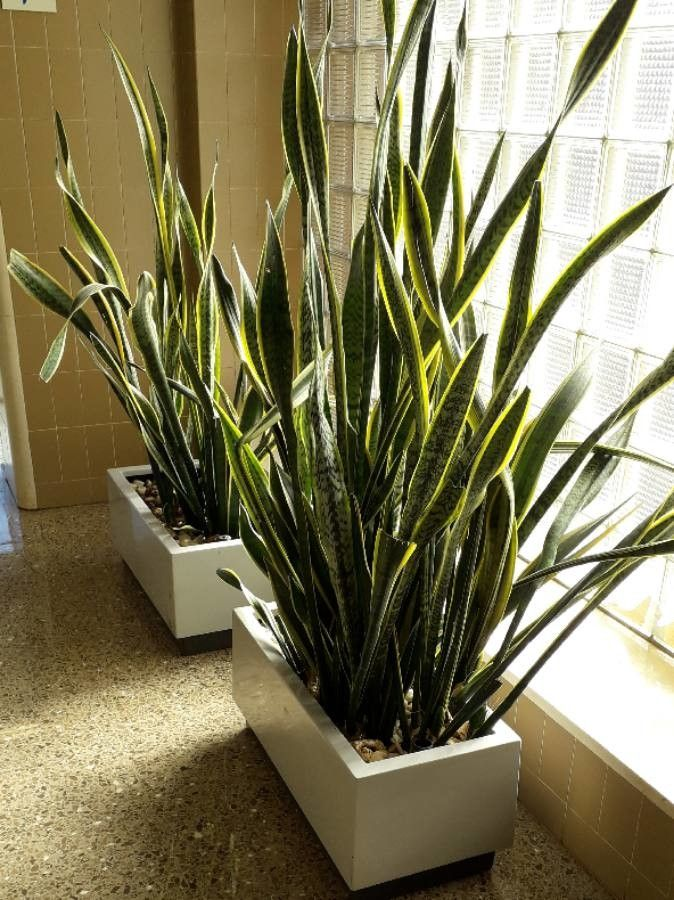
Although Saponin effectively prevents fungi and insects, it could be harmful to people and animals. When consumed, the substance saponin has gastronomic effects on both people and animals and is poisonous to all living things.
Furthermore, skin dermatitis might be brought on by the plant’s fluids. Dermatitis is a condition that causes redness or irritation to the skin.
People and animals, including cats, that over-chew or consume snake plant parts run the danger of having life-threatening allergic reactions. In the worst-case scenario, these responses can cause tissues in the esophagus and mouth cavity to enlarge. Such a reaction might ultimately put human or animal life in grave danger.
What Parts Of The Snake Plants Are Poisonous?

The entire Mother in Law’s Tongue Plant is full of saponins and organic acids. Due to the saponins’ poisonous nature, all snake plant parts should be avoided. In addition, the plant’s upright, long leaves and stems, which are easy to access by your pets, contain Saponin.
Occasionally, your snake plants may produce flowers and bring out scented, greenish-white blooms that look similar to lilies. These blooms will mature eventually to become berries that are red-orange in hue. These flowers and fruits should also not be eaten since they are also poisonous.
The plant’s leaves’ juice or sap might irritate the skin mildly. But, on the other hand, cats are more unlikely to come into contact with it due to their furry bodies.
What Will Happen To My Cat If It Eats A Snake Plant?
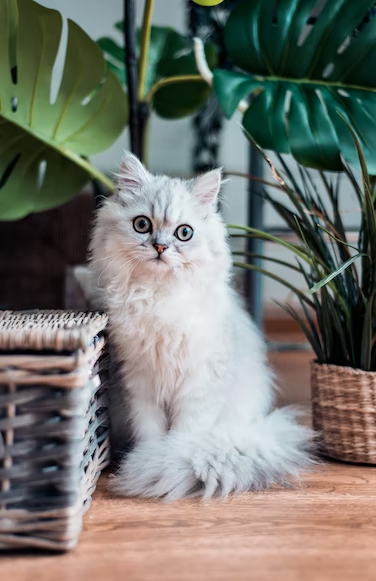
If your cat decides to eat a leaf from your snake plant, the first thing that will happen is that the plant will release its saponin poison when the leaf breaks. Your cat will taste an extremely bitter flavor as soon as it ingests some of these saponins. If your cat continues to devour any of the leaves, these are a few indications to keep an eye out for:
- Vomiting
- Diarrhea
- Appetite Loss
- Nausea
- Abdominal discomfort
- Depression
- Swollen Throat or Mouth
Your cat is more likely to experience more severe symptoms if it already has a chronic disease or other medical condition.
Hopefully, the cat won’t try to eat any of the plant as the poison would leave a bad aftertaste in its mouth as soon as it takes a mouthful. As a result, they may only consume a little portion of the plant (if any at all), and they’ll try to spit the remainder out.
Fortunately, if your cat does accidentally swallow any saponin, it won’t be lethal. So, if your cat experiences any symptoms, they ought to disappear after a couple of days. But, you should still make sure to get in touch with your vet and let them know what events have transpired.
To be cautious, or if your cat swallowed too much of the poison or if its symptoms make it uncomfortable or painful, you might still want to take it to the vet. Get your cat to the doctor at once if you detect anything, such as swelling or scratching.
To ascertain what has to be done, your veterinarian will examine your cat. Antihistamines for allergies and other medicines may be recommended if necessary. These medications will aid in calming your cat’s upset GI system and stomach.
RELATED: Moonshine Sansevieria: #1 Care, Propagation, and Watering Guide
Diagnosing Snake Plant Poisoning In Cats
Bring your cat to your veterinarian for a professional evaluation if it starts to exhibit symptoms of poisoning or an allergic response. For example, you could find plant matter in your cat’s mouth or witness obvious bite marks on the plant’s leaves.
Remember to bring the cat’s complete medical history with you to the clinic so the doctor can identify probable illnesses or potential consequences. Consequently, the veterinarian could also inquire about the kinds of plants you maintain in or around your house, as well as if you let your cat go outside.
The vet will then thoroughly examine the cat to search for any anomalies that may have contributed to or been a result of the sickness. The cat’s blood pressure, temperature, and other vital signs will all be recorded.
A sample of the cat’s blood will be taken so that common tests may be performed to determine the cat’s general health status. These tests typically consist of a biochemistry profile and a full blood count. A urine test could also be suggested by your veterinary.
Treating Snake Plant Poisoning In Cats
Since there is no established course of therapy for snake plant poisoning, symptoms will probably be managed as they appear. As a result, some conditions might not need any treatment, while others may need a brief hospital stay.
However, here are a few of the things you can do to help avoid Snake Plant poisoning in the future.
1. Eliminate Plant Matter
To achieve this, rinse your pet’s mouth with water to get rid of any remaining pieces of the plant. To avoid further digestion of the plant material, the stomach’s contents may be emptied via emesis (vomit inducement) or gastric lavage (stomach pumping).
2. Supportive Care
Specific treatment alternatives can be employed to encourage the cat’s recovery throughout the sickness.
Intravenous fluids may be administered if the cat has become dehydrated as a result of severe vomiting or diarrhea. Antihistamines or stomach-soothing medications may also be given to help with swelling and open airways. Some cats might require assistance with eating and a sloppy or mushy diet.
Recovering From Snake Plant Poisoning For Cats
The entire recovery of most cats that have consumed snake plant is anticipated to take a day or two. Therefore, it is extremely improbable that this plant’s poison would result in death.
However, to avoid having the same problem in the future, ensure that you relocate the plant to a spot in your house where your cat cannot get it. As an added measure, several homeowners decide to get rid of their snake plants.
Keeping your cat indoors, where you have complete control over what they are exposed to, is the only method to protect them from poisonous plants that are growing outside.
Remember that the cost of treating snake plant poisoning can be high. Hence, obtaining pet health insurance immediately might be a good proactive measure to prevent expensive vet care costs. The sooner you insure your pet, the more protected you’ll be against unforeseen medical expenses.
How Do You Prevent Your Cat From Eating Indoor Houseplants?
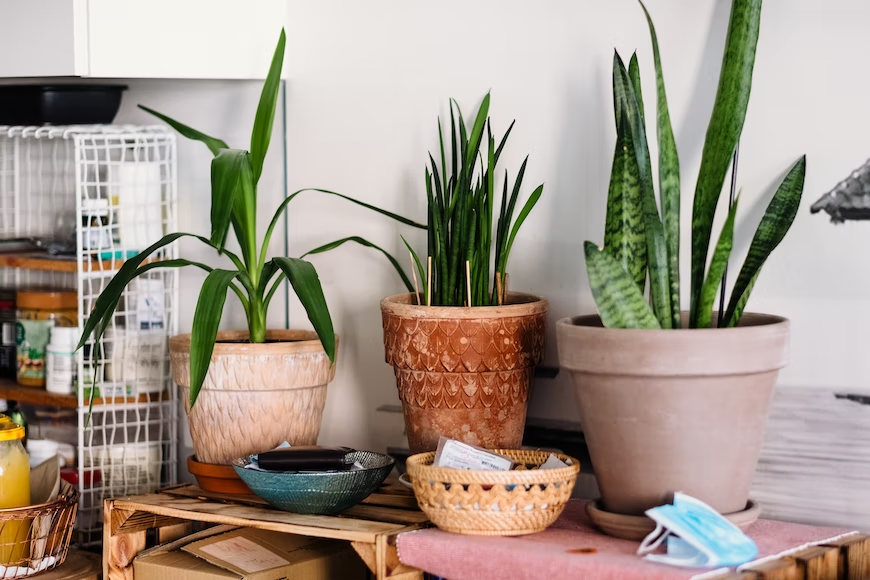
It is with no doubt that your home or office will look stunning with houseplants as decor. Unfortunately, however, a number of lovely plants, such as your Snake Plants, are not suitable for pets. But, there are still measures you can take to prevent any discomfort or potential calamity brought about by these beautiful indoor plants.
Here are some suggestions and easy ways to stop your pets from eating your houseplants.
1. Place Your Snake Plant Somewhere High
Make sure to relocate the plant, preferably to a high shelf, to a spot in your house where your cat cannot access it. In particular, if you have tiny cats or kittens, this will make it challenging for them to climb and consume the plant.
2. Relocate Your Snake Plant Somewhere Inaccessible To Cats
Try relocating the plant to a spot that is just out of your cat’s reach rather than removing it entirely from your house. Keeping the plant away from your cat’s dining area, furnishings, and litter box may be more said than done because cats appear to be able to reach just about anything.
The snake plant should ideally be placed in a room with a door that can be closed. By doing this, you can prevent the cat from escaping when you’re not watching it. The good news is that snake plants don’t need much sunshine, so you can put one in a room with little natural light, and it should do just well.
Moreover, you might also decide to transfer indoor snake plants outside as an added measure of safety. These plants can grow in practically any place and are highly resilient.
3. Make Your Snake Plant Smell Bad
To make the pot rims smell very repulsive to pets, squeeze some lemon or orange zest on them. Almost all cats and dogs detest the scent of citrus.
As a bonus, you might be able to deter some pests like aphids by spraying citrus on or close to your plants. Aphids are annoying insects that may enter your home and swiftly infest your houseplants. Additionally, because they don’t have any internal predators, they may multiply swiftly and pose a serious threat. Citrus peels may be made into a spray that works well as a natural insecticide and is safe to use around your house and pets, although they won’t enjoy the scent.
Cinnamon added to the soil is a nice idea as well. It serves as a natural pesticide and fungicide for your snake plant in addition to deterring cats.
RELATED: Snake Plant: Is It A Succulent? The Answer You Need To Know!
4. Spray Pet Spray To Your Snake Plant
You might try utilizing a variety of pet repellents that are sold on the market to keep your cat away from your snake plant. These sprays function by preventing your cat from nibbling on specific objects.
The majority of tastes are quite bitter to cats but are not poisonous. The sprays are available in citrus or bitter apple scents. Nevertheless, keep in mind that each cat is unique, and some may enjoy the flavor of some sprays while abhorring others in particular. Finding the one that your cat hates may need a few tries.
Additionally, you should look for a spray that won’t harm the leaves of your plant. Spraying just a tiny portion of the plant’s leaves will allow you to test this. Wait for a time to find out if the spray hurts the plant. If not, spray the remaining plant as directed by the manufacturer, at the suggested frequency.
Alternatively, one part vinegar and three parts water can be used to create a more natural solution.
5. Plant Cat Grass
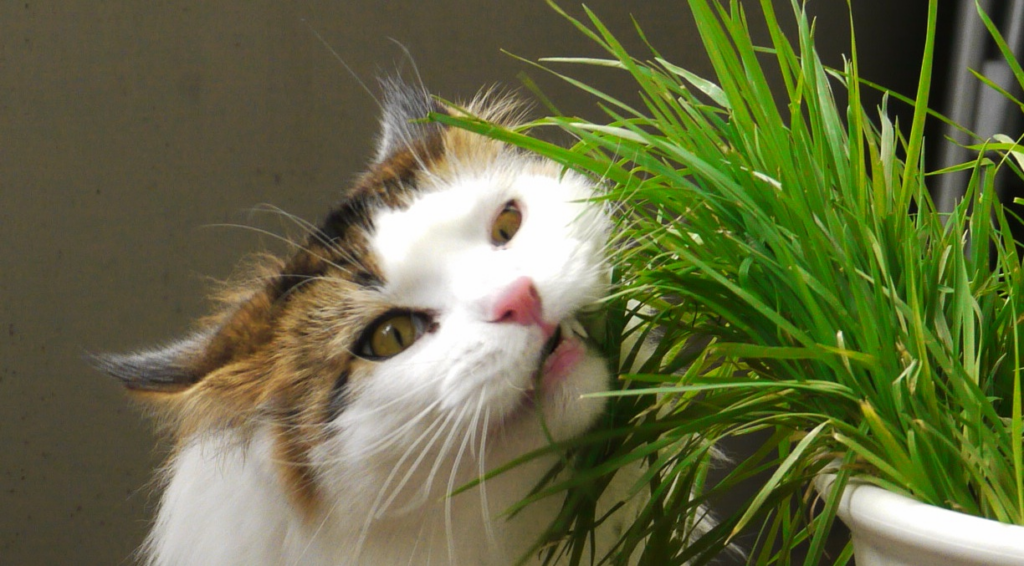
If your cat enjoys chewing on plants, you may grow cat grass, especially for them. You may get it online or at a pet store. Although cat grass is relatively harmless, occasionally eating it can make people throw up. Cats won’t become ill from it, though.
Cat grass is a grass combination that is cultivated from seeds of wheat, barley, rye, oats, or barley rather than a specific variety of plant.
You don’t want to confuse cat grass with the grass in your yard since they are different. Allowing your cat to graze on your lawn grass is not a smart idea. That would probably result in nausea or even worse if the lawn has been sprayed with chemicals.
Cat grass is a unique combination that is securely grown inside just for family pets. Cat grass may function as a deterrent, diverting your cat’s attention away from your other houseplants, which is one advantage of having it in your home.
In addition, your cat will be less likely to attack your snake plant, which is unsafe for cats if it is more distracted by the cat grass.
6. Keep Your Pet Cat Indoors
Keep your cat inside, where you have complete control over the things they are exposed to, to protect it from poisonous plants that are growing outside.
Final Thoughts
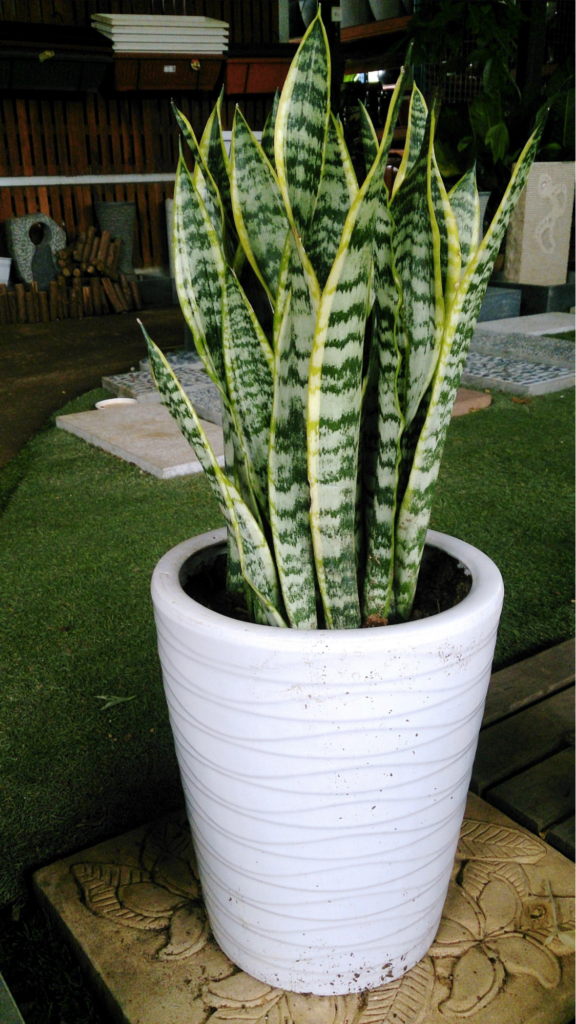
Some plants don’t thrive in homes with cats, especially if they are highly curious. However, if you currently have a houseplant that is poisonous to cats, there are a few things you can do to prevent accidents where cats inadvertently swallow them.
Never hesitate to call your veterinarian if you have any reason to believe that your cat has consumed a poisonous plant, like Snake Plant, Aloe Vera Plant, and Monsteras. Being safe is preferable to being sorry.
Buying plants that are safe for cats to consume is the finest and safest method to have plants in your house.
Thankfully, there are a ton of attractive indoor plants that cats may safely enjoy. Therefore, don’t be reluctant to use your imagination. In little time at all, you’ll have a joyful and peaceful house with lovely plants and kitties.
Editor’s Recommendations
Snake Plants: Can They Survive Under Direct Sunlight? Top Answers and More!
Growing Snake Plants Outside: Can They Thrive Outdoors? Answers and More!







